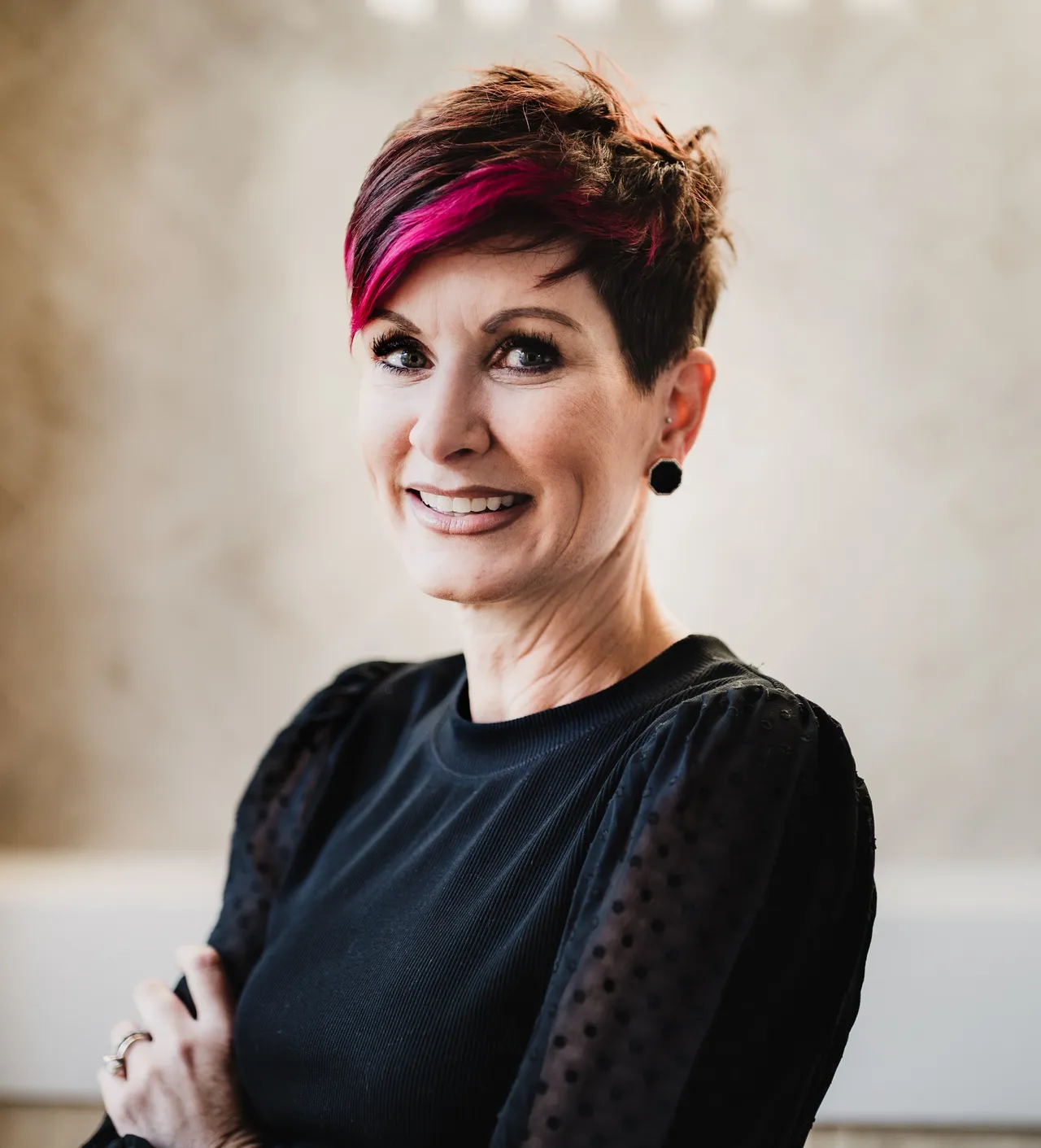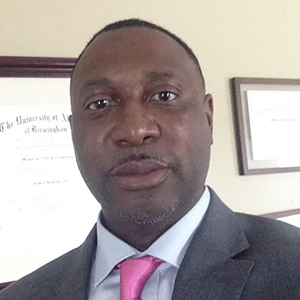Abstracts
Innovations in Clinical Sexology
Explore the latest doctoral research from the International Institute of Clinical Sexology, showcasing pioneering studies in therapeutic practices, sexual health, and holistic approaches to intimacy and healing.

Dr. Stephanie Gamache
Abstract
The Sexual Sense of Self: Developmental Origins and Therapeutic Intervention for Psychogenic Erectile Dysfunction
This doctoral project introduces an innovative intervention for psychogenic erectile dysfunction centered on enhancing the sexual sense of self-defined as the capacity to maintain connection with one's own experience while in intimate contact with another, while simultaneously being transformed through this encounter. Drawing from developmental psychology, neurobiological research, and clinical sexology, this project proposes that the sexual sense of self originates in early feeding experiences, where patterns of connection and separation establish the capacity to recognize authentic needs and desires and boundaries. The infant's experience at the breast creates templates for adult sexuality through limbic system patterns that influence pleasure, boundary regulation, and intimate connection. The intervention employs an 8-session clinical treatment protocol delivered through treatment sessions, integrating hypnotic intervention, body based awareness practices, and relational exploration. This project makes three significant contributions: (1) introducing the original construct of the sexual sense of self for understanding psychogenic erectile dysfunction; (2) developing a comprehensive therapeutic protocol that integrates multiple therapeutic modalities; and (3) creating a comprehensive approach addressing both immediate symptoms and developmental origins of psychogenic erectile dysfunction.
Keywords: Erectile Dysfunction, adult sexuality, intervention, coping mechanisms, relationships.

Dr. Karyn Wittmeyer
Abstract
Experiences of New Relationship Energy in Consensually Nonmonogamous Relationships
This constructivist grounded theory study explores how participants in consensually nonmonogamous relationships (CNM) navigated challenges associated with the new relationship energy (NRE) period of a relationship, either as the established partner (EP) of someone experiencing NRE, or as the new relationship energy partner (NREP). Through qualitative interviews with eleven participants, the researcher was able to find common themes in narratives shared by the participants. The findings reveal that there are many biopsychosocial factors, especially around attachment and identity, that influence how the participants interacted with their NRE or their NREP during this time. The findings also supported the idea that NRE is another word for limerence, and that NREPs’ experiences were similar to that of people who describe limerent experiences, explaining the volatility of this phase of a relationship. The research also suggests several strategies participants commonly used to learn to successfully navigate the NRE period. This study contributes to existing research on attachment and needs fulfillment, which has mostly been done in the context of monogamous relationships.
Keywords: Nonmonogamy, attachment, needs, coping mechanisms, relationships.

Dr. Tempany Andersen
Website:
Abstract
Unveiling the Hidden Struggle: A Grounded Theory Exploration of Sex Addiction in Married Orthodox Jewish Males
Sex addiction within Orthodox Jewish communities remains underexplored, despite growing clinical awareness of its emotional and relational impacts. I conducted a qualitative grounded theory study to investigate how cultural, religious, and psychological factors contribute to the development and maintenance of sex addiction among married Orthodox Jewish men. Understanding these dynamics is essential for improving culturally responsive treatment and reducing stigma in religious settings. I collected data through semi-structured interviews with 8 adult participants, recruited using purposive and snowball sampling. Grounded theory methodology guided open, axial, and selective coding to support theory generation. Findings is supporting the development of the Shame-Regulation Cycle, a theoretical model illustrating how unresolved trauma, moral conflict, secrecy, and emotional avoidance drive compulsive sexual behavior. Participants described sex not as a source of pleasure, but to regulate distress. Shame emerged as both a trigger and product of the behavior, reinforcing a feedback loop that deepened emotional isolation and obstructed recovery. Results indicate that therapeutic approaches must move beyond behavior management to address the underlying emotional and spiritual conflicts shaping addiction. Interventions should integrate emotional regulation therapies with cultural fluency and linguistic accessibility, particularly for Yiddish-speaking individuals. Community-based education and rabbinic support may also reduce stigma and foster safer avenues for early intervention.
Keywords: Sex addiction, Orthodox Judaism, grounded theory, shame, emotional regulation

Dr. Gretchen Blycker
Abstract
The Yoga of Sex: A-MYSTERY
Awakening-Mindfulness-based, Yoga-centered Sexuality: Therapeutic and Educational Resources for Young-adults
Background:
Sexual wellness is important and integrative with overall health, wellbeing, and identity. Many individualized factors contribute to sexual meaning, pleasure, vitality, and creativity in our personal selves. Comprehensive holistic sex education (CHSE) views sexuality holistically in the context of emotional and social health. It has evolved to encompass developmentally appropriate knowledge and skills in a participatory process of exploring ones’ own values to be empowered to make decisions, communicate skillfully and take responsibility for one’s own and others’ sexual wellbeing in contributing to a compassionate and just society. Sexuality is multidimensional and intersects with personal, interpersonal, social, cultural, economic, political, and spiritual dimensions. According to Tibetan Vajrayana Buddhism and certain other spiritual teachings, sexuality is in inherent aspect of our blissful enlightened nature and wisdom can be consciously interwoven to enlighten worldly experiences of sexuality to be integrated in a path of enlightenment. Promoting awareness of energy-based sexuality can be part of a process creating liberation from heteronormative conceptualizations of sexuality and other possible sociocultural factors youth may be navigating, such as sexual media socialization in the digital era. Additional problems youth are facing include systems shaped by harmful views, beliefs and behaviors such as sexism, misogyny, homophobia, rigid gendered roles, sexual double standards, and sexual objectification.
Aims:
The promotion of sexual and relational health is vitally important for young adults and can have implications towards their wellbeing. To meet the need for sexual wellness education programs for young adults, the Yoga of Sex: A-MYSTERY includes embodied contemplative practices that integrate inner inquiry processes of investigating and transforming physiological and psychological experiences towards balance and mental, sexual, and physical health. This curriculum has a focus on cultivating self-awareness, compassion, personal wellbeing, and growth. This experiential and personalized program seeks to create a space for young adults to support their healthy sexual development in a holistic context of body, energy, and mind. In smartphone application-based learning modules, information provided in video, audio, and text formats can be explored in a self-paced style with a community forum, tracking and motivating features. Relaxation-based and arousal-based yoga methods and practices are integrated to provide a foundation of back-to-basics-connection with oneself in a harmonious, peaceful, and loving way. In addition to exploring their own unique development although being introduced to practices that support connection to themselves, they will also investigate the systems they live in. A-MYSTERY is a sexual violence prevention and sexual pleasure promoting program by focusing attention, learning, and experiencing in an individual, and in an embodied emotionally informed context. This approach cultivates sexual intelligence, emotional empathy, and sexual empathy, which are required for effective communication.

Dr. Michael Eiden
Abstract
An Assessment of the Effectiveness of an Educational Program to Improve Parental Self-Efficacy in Managing Children's Addictive Internet Use
Addictive internet usage is at the forefront of an ongoing mental health epidemic affecting all people, but landing hardest on children. Addictive internet use affects neurodevelopment in children, altering brain regions critical for language and emotional regulation (Darnai et al., 2022), in addition to a multitude of negative effects on social belonging, increased loneliness, and emotional dysregulation (Haidt, 2024; Vismara et al., 2022; Spruit et al., 2020; Tironi et al., 2021). A significant barrier to improving the trajectory of this social issue’s impact on our modern world is parents’ limited self-efficacy in their ability to accurately recognize addictive behavior in their children online and respond with appropriate parental mediation strategies like limit setting and ongoing active dialogue about digital life (Beyens & Beullens, 2016; Nagata et al., 2022a; Muppalla et al., 2023). The purpose of this study was to evaluate the effectiveness of a 2-hour interactive educational program (The Digital-Age Parenting Workshop: How to identify addictive behavior online and set limits) aimed at enhancing parents' self efficacy in establishing age-appropriate screen limits for their children. Specifically, this research investigated whether participation in the program increases parents' self-efficacy in effectively monitoring their children’s internet usage, with a focus on reducing exposure to high-risk online behaviors such as excessive gaming, pornography use, social media, and vulnerability to online sexual solicitation. This study addressed a critical gap in current literature by providing empirical evidence on a brief educational intervention designed to empower parents to implement protective screen time boundaries, thereby protecting the social, neurological, and sexual development of their children. The primary outcome measured was the degree of change in parental self-efficacy in regards to accurately recognizing addictive internet use and ability to set age appropriate limits. The secondary outcome measured was the behavioral change participants engaged in at one-month 4 post participation. Attachment theory was used as the primary theoretical framework of the study, due to its relevance to the focus on preserving the healthy development of children. Transformative Learning Theory was chosen as the secondary theoretical framework guiding this study as it served as the foundational learning strategy for the program being evaluated. This study was conducted using a mixed-methods design that collected pre- and post-test surveys from a total of six parents, including using a convenience sampling method, that participated in a two-hour educational program. The data analysis for the study was conducted using Cohen’s d to measure the magnitude of change in learning outcomes and a thematic qualitative analysis to glean insight from the parent participants’ experience to better inform future research.

Book & Blog: www.patelokc.com
Abstract
The Power of Connection: How Attachment and Loneliness Influence Sexual Satisfaction in Entrepreneurial Marriages
Entrepreneurs are often celebrated for their ambition, innovation, and relentless drive, but what is the cost of that success in their personal relationships? This study explores how emotional connection, specifically through the lenses of attachment styles and loneliness, influences sexual satisfaction among married entrepreneurs in the United States whose businesses gross over one million dollars annually. Despite the growing attention to the emotional and relational challenges of high-achieving individuals, little is known about how these internal dynamics manifest in their intimate lives. Using a quantitative research design, data was collected from 125 married entrepreneurs through an anonymous, web-based survey that included validated instruments measuring adult attachment, loneliness, and sexual satisfaction. Statistical analysis revealed that secure attachment styles were positively associated with greater sexual satisfaction, while higher levels of loneliness were strongly linked to diminished sexual fulfillment. Interestingly, certain dimensions of attachment insecurity, such as anxiety and avoidance, also played a significant role in shaping relational and sexual dynamics within entrepreneurial marriages. The findings of this study suggest that emotional closeness and relational security are not only desirable but essential for maintaining sexual intimacy in high-demand lifestyles. These insights have important implications for clinical sexologists and relationship professionals working with entrepreneurial couples, as they underscore the need to address both emotional and relational wellness as part of a holistic approach to sexual satisfaction. Future research could further examine how entrepreneurship-specific stressors, such as financial risk and work-life imbalance, may compound or moderate these relational outcomes.

Dr. Brittany Edge
Abstract
The Self in Sex Therapy Certification: An Exploration of Certified Sex Therapists’ Experiences With Self-of-the-Therapist Work
When the development of the sex therapist’s self is included in training experiences, they become aware of how their personal aspects impact the therapeutic relationship and develop skills to use their self in a clinical context. This exploration into who a therapist is and how their personhood impacts their clinical work is often referred to as self-of-the-therapist work. In this qualitative study, the experiences certified sex therapists had with self-of-the-therapist work during sex therapy certification was investigated. Interviews of 25 certified sex therapists were conducted. The interviews focused on their experiences with sex therapy training which attended to personal aspects (such as personal histories, values, biases, and triggers) and how the exploration of their personhood impacted their clinical work. Most of the participants in this study identified a lack of explicit self-of-the-therapist work during their sex therapy training; however, they revealed various ways they engaged in self-of-the-therapist work on their own. The themes which emerged identified perceived areas of strength and areas of growth for how their sex therapy certification programs included self-of-the-therapist work into their training; they also identified a desire for increased attention to self-of-the-therapist work during the sex therapy certification process.

Co-founder of the Love Discovery Institute, Dr. Carolina Pataky is a Licensed Marriage and Family Therapist, Certified Sex Therapist assisting both individuals and couples fine tune and find empowerment within themselves and their relationships. She’s the creator of the H.I.M. Method (Healing Intimacy in Men) and BeLove Programs (Soul-discovery for individual and couples) and she is also recognized as one of South Florida’s leading authorities surrounding intimacy, relationships and sexuality. Her private practice is located in two locations the heart of Coral Gables and Miami Beach. Additionally she works with various venues around the world to facilitate retreats and workshops worldwide.
As a relationship and intimacy therapist, she assist individuals and couples find alignment with their thoughts, emotions and spiritual bodies. Since she believes the quality of your relationships start with the relationship you have with yourself. When we start aligning our feelings, mind and spirit, our capacity for compassion and love expands and as a result, our relationships become extraordinary. This process also relieves individuals from anxiety, angst, depression, spiritual crisis, fears, anger, loneliness, being stuck in life and more. , When we start healing ourselves, everything else follows.
Abstract
H.I.M. Method (Healing Intimacy in Men)
A major problem facing men today is their inability to express themselves throughout the vast spectrum of emotions. In particular, men have difficulty showing vulnerable aspects of themselves in an effort to meet male expectations which can create barriers to intimacy. In the context of relationships, men often find themselves unable to intimately connect with their partners. Additionally, the lack of emotional expression and fear of intimacy can have adverse personal and social consequences in their friendships, families, and for themselves (Pease, 2014).
Although traditional therapies attempts to help men cope with their emotional disconnect, verbal therapies can be uncomfortable and further expose their vulnerabilities. Many therapists have begun to understand that healing comes from both the cognitive understanding as well as inner feelings governed by a deeper sense of the self (Jung, 1963; May, 1990).
Over the years, therapists have found several holistic approaches and mindfulness-based practices to be helpful, but still lack a deeper connection to their clients’ innermost selves. A transpersonal exercise known as breathwork which has primarily been used in healing circles, has recently entered therapeutic offices.
Through a conscious connected breathing method, breathwork combines mindfulness, experiential and bioenergetic techniques which may help men become more connected to their emotions. A video series was developed to help clinicians gain a better understanding of breathwork and learn how to incorporate it in their practices. The 8-Part series focuses on male barriers to intimacy and how breathwork in conjunction with traditional therapies can help men become more emotionally open and expressive.

Robert Weiss PhD, MSW is an expert in the treatment of adult intimacy disorders and related addictions, most notably sex/porn/relationship addictions along with co-occurring drug/sex addiction. A clinical sexologist and practicing psychotherapist, Dr. Rob frequently serves as a subject matter expert for major media outlets including CNN, HLN, MSNBC, OWN, The New York Times, The Los Angeles Times, and NPR, among others.
Dr. Rob is the author of Prodependence: Moving Beyond Codependency, Out of the Doghouse, Sex Addiction 101, and Cruise Control, among other books. He blogs regularly for Psychology Today and Psych Central. His podcast, Sex, Love, & Addiction, is rated as a Top 10 Addiction Podcast for 2019. He also hosts a weekly live no cost Webinar with Q&A on SexandRelationshipHealing.com. A skilled clinical educator, Dr. Rob routinely provides training to therapists, hospitals, psychiatric organizations, and even the US military.
Over the years, he has created and overseen nearly a dozen high-end addiction and mental health treatment facilities across the globe. For more information or to reach Dr. Rob, visit SeekingIntegrity.com. You can also follow him on Twitter (@RobWeissMSW), LinkedIn (Robert Weiss LCSW), and Facebook (Rob Weiss MSW).
Abstract
Exploring and Comparing Codependence & Prodependence
Developing a new attachment-focused paradigm for the treatment of spouses and partners of sexual addicts/compulsives
Robert Weiss | PhD Dissertation, International Institute of Clinical Sexology | 9.1.2018
Spouses and partners of sexual addicts/compulsives, by the time they seek therapy/counseling for themselves, are typically in the midst of a full-blown emotional and relationship crisis not of their own making. Their lives are filled with uncertainty, as the relationship they’ve most trusted has been devastated by sexual addiction/compulsivity. And despite their presenting with an immediate, clear, and unique interpersonal crisis, they are typically treated utilizing some variation of codependence work, a model that, by definition, is grounded in early-life (rather than current) trauma.
Admittedly, there are many variations of codependence work currently in use, but these one-off methodologies are ungrounded in psychological theory and research, and all are evolved and adapted from the early-life-trauma focused codependency model. Thus, work with spouses and partners of sex addicts/compulsives has generally focused on exploring their early-life issues and how those issues might be impacting their current decisions and behavior, while encouraging detachment from their sexually addicted/compulsive loved one. These models, in their many variations, have traditionally done little to mirror or address the life challenges and feelings of betrayal, loss, rage, and shame that spouses and partners of sex addicts/compulsives almost universally experience.
With the World Health Organization’s announcement of Compulsive Sexual Behavior Disorder as an official diagnosis in the ICD-11, this is a useful time to explore a new treatment model for spouses and partners of sex addict/compulsives – a model based in attachment theory more than early-life trauma. With the dual goals of increased client participation and improved efficacy of client outcomes held in mind, a new paradigm is needed. A paradigm that is more invitational to the client than past models, and less pathologizing of their understandably erratic emotional and behavioral expressions acted out in the midst of crisis. A paradigm that reflects the immediate needs of a betrayed spouse or partner for validation and support, rather than examination and judgement. A paradigm that understands and celebrates the idea that the betrayed spouse or partner is in crisis yet still trying to help and remain attached to a troubled loved one.
I have created the word and the concept of prodependence to meet this need. Grounded in attachment rather than trauma theory, prodependence views the betrayed partner’s enabling, enmeshed attempts to control the behavior of a sexually addicted/compulsive individual as normative, not as evidence of the betrayed spouse or partner’s own pathology (his or her early-trauma-fueled codependence). When viewed through the lens of attachment and human bonding, the actions of the betrayed spouse or partner of a sexually addicted/compulsive individual shift from being pathological to being human and understandable.
Prodependence views what has previously been seen as dysfunctional as how any person would act if presented with the extraordinary life crisis of a beloved spouse or partner’s sexual addiction/compulsivity. With the attachment-based model of prodependence, gone are the labels, gone is the pathology of being a “co-addict” or “codependent,” gone is the blame and shame attached to spouses and partners of sex addicts/compulsives. Attachment-based theory applied to the treatment of these clients means initial treatment does not push them to self-examine, self-explore, and self-explain while in the midst of a profound life crisis. The attachment-based model of prodependence makes room for all the following:
- De-pathologizing the client’s behaviors, even when those behaviors “look crazy” and are clearly counterproductive.
- Validating the client’s (possibly enabling, enmeshed, and controlling) behaviors as healthy though perhaps less than optimal attempts to live with and care for a sexually addicted/compulsive individual.
- Encouraging healthier forms of self-care and improved boundaries with the sexually addicted/compulsive individual and others without assigning pathology and using that as impetus for therapeutic work.
To evaluate the theory of prodependence, an informational presentation on prodependence was created, along with a 30-question research survey for therapist-participants. First, therapist-participants were asked about their training, background, and the ways in which they tend to treat spouses and partners of sexually addicted/compulsive individuals during the initial stages (the first 60 days) of treatment. Immediately following this pre-test, participants were presented with a one-hour educational discussion about both codependence and prodependence.
After this presentation, therapist-participants were asked follow-up questions about the ways in which they are likely to treat partners of sexual addicts/compulsives moving forward. The goal of this study was to learn more about what model(s) therapists who treat this population have embraced, and to what degree, and then to determine whether therapists believe prodependence to be a more welcoming and potentially more effective treatment modality for spouses and partners of sex addicts/compulsives in the initial stages (the first 60 days) of treatment.

Abstract
Assessing the Need for a Social Skill Based Sexuality Education Curriculum for Adolescents with HFASD Utilizing Mental Health Professionals in South Florida
This dissertation looks at the need for a social skills based sexuality education curriculum for adolescents with high functioning autism spectrum disorder (HFASD) by surveying South FLorida mental health professionals.
For this purpose, 46 mental health professionals were surveyed. It was shown that the largest barriers to current implementation to sexuality education was that “clinician did not feel they have enough training” and “parent/family was uncomfortable or resistant.” Also, over 88% of respondents reported being interested in receiving training on how to implement a sexuality education program for adolescents with HFASD. The results suggest there is a high need and a high interest for the development and training for a social skills based sexuality education curriculum for adolescents with HFASD.

Abstract
Certified Sex Offender Therapist Program
The proposed research is a general narrative review of the literature on the issue of the certification of treatment intervention providers for adult and juvenile sex offenders.
The proposed research is predicated on the belief that too much attention has been placed on the risk factors and needs of victims with a lack of inquiry on how those needs are met with specific programs tailored to sex offenders. This shortcoming in the literature requires an inquiry into the providers of the treatment intervention models currently described and studied in the literature. Currently, the effectiveness of treatment programs form the bulk of studies reported in the literature.
There is no conclusive evidence of why some of the programs fail to prevent or reduce recidivism rates among juvenile and adult sex offenders. The proposed research will address this gap in the literature by directing attention toward the treatment provider and how there is a need for certification to ensure that treatment intervention programs are more effective.
Therefore, the risk need and responsivity (RNR) model for the treatment intervention of adult sex offenders and the Multisystemic treatment intervention (MST) model for juvenile sex offenders will be examined in the proposed research study. An examination of these program providers will shed light on how the unacceptable recidivism rates among juvenile and adult sex offenders. While the literature has provided empirical data on the effectiveness of the treatment intervention programs for adult and juvenile sex offenders, there is little, if any attention on those who provide the treatment.

Abstract
A Platonic Agreement for Relationship Improvement Strategy (PARIS) to Enhance Marital Satisfaction: A Mixed Methods
Background
Statistically, American Orthodox Jews have happier marriages than other Americans. The marital satisfaction levels of 3,002 U.S. Orthodox Jews was 74.9% while the level of 1,336 U.S. individuals was 59.95%. One possible reason for this difference is the practice of Taharat HaMishpacha by Orthodox Jews, which requires couples to cease physical contact with their spouses for approximately 12 consecutive days each month.
Research question/hypotheses/theories
The research question is: How will 20 married couples, who are not Orthodox Jews, experience the Platonic Agreement for Relationship Improvement Strategy (PARIS), a modified version of Taharat HaMishpacha? Research hypotheses, based on the scarcity principle, attachment theory, and ritual theory are: H1 – Couples will feel more satisfied with their relationships; H2- Couples will feel more like they are part of a team; H3 – Couples will feel their partners meet their needs better; H4 – Couples will feel their relationships are stronger.
Methods
A mixed methods design will answer the research question and test the hypotheses. A convenience sample of couples will be recruited via social media, professional referral and snowball sampling. Couples will complete questionnaires pre-PARIS, at 3 months (halfway), and at completion. Qualitative questions will be asked monthly. PARIS consists of three parts: (1) the choosing of a 12-day platonic period during which couples will avoid sexual touching, (2) The signing of a contract to commit to the platonic period for each month of the 6-month study, and (3) The creation of one shared ritual to mark the end of every platonic period.
Keywords: Taharat HaMishpacha, relationships, marriage, Orthodox Judaism, couples counseling

Abstract
The role of sensuality, imagination, and curiosity in high and optimal sexual satisfaction
The central purpose of this research was to examine the relationship between certain personal qualities with high and optimal sexual satisfaction. There is a breadth of research on sexual function and dysfunction and several studies on sexual satisfaction.
However, very little research exists on what kind of qualities are likely to lead to optimal sexual experiences, and to my knowledge this is the first quantitative study on the topic. The author selected three key qualities–sensuality, imagination, and curiosity—to examine how they relate to high and optimal sexual satisfaction.
Because the literature has shown strong support of the positive relationship between sexual satisfaction and relationship satisfaction, participants were divided into two groups – those judged to be in secure relationships versus those in insecure relationships. A large sample of people (N = 195) completed an online survey composed of five measures. Results indicated a statistically significant positive correlation between sensuality, imagination, and curiosity with sexual satisfaction—but only among individuals in a secure relationship. Results indicate a statistically significant positive correlation of sensuality and imagination among those with optimal sexual satisfaction. In conclusion, implications are discussed, including strengths and limitations of the study, suggestions for sex therapists and sex educators, and recommendations for future research.

Abstract
Cisgender adolescent males with sexualized attachments
This capstone project is a research-oriented project that incorporates the culmination ofinformation learned throughout the doctoral program at The International Institute of Clinical.
Sexology (IICS) and additional research. It addresses the gap in information for adolescents and young adult males who struggle with issues related to sexualized attachments. Minimal information currently exists specifically for this group and much less in the form of an active workbook. Based on the author’s clinical experience in working with adolescents and young adult males who experience sexualized attachments, this workbook focuses on providing accurate information and practical tools. The creation of the workbook addresses concerns often verbalized by these young men, as well as questions presented by therapists, clergy and parental figures. It opens the dialogue to create effective support for youth and young adults within the general community.

Abstract
An educational review examining the spiritual and physical law teachings provided to the bride and groom in the jewish orthodox community
For many brides and grooms in the Jewish Orthodox religion, Taharat HaMishpachah classes are the only type of education on how to approach the marital lifecycle. The purpose of this study is to help readers understand the value behind the Laws of Taharat HaMishpachah, see how the teaching of the laws has changed as the world has changed, and what additional information has been adapted to help maintain the nature of these laws.
The research designed involved the utilization of a qualitative research method to examine the perceptions of each participant. By exploring the perceptions of each individual who had experienced learning the Laws of Taharat HaMishpaschah, this research helps understand the difference in how the laws are conveyed today. Qualitative findings showed both similarities and differences between different age groups and level of observance. The findings showed why it is significantly important and beneficial to learn the rules of Taharat HaMishpachah, as well as additional information that would be useful to help couples. The two main focuses of the study were to see how modern society impacts the laws, and to see if during the time couples are separated, it would be helpful to learn how to connect to your spouse in a non-physical way. The results provided examples of essential topics that participants wanted to see taught in classes, such as human physiology, building emotional intimacy, and achieving a connection with their partner during the times of prohibited physical connection.

Dr. Yulinda Rahman
Dr. Yulinda Renee Rahman (Rock-man) is a Licensed Clinical Professional Counselor, Board Certified Sex Therapist, Licensed Professional Educator, Dr. of Clinical Sexology, Researcher of Therapeutic BDSM™️, and founder of the nonprofit Heal On Purpose Inc.
She is also an author, thought leader, and speaker, with a vested interest in identifying the prevalence and impact of sexual trauma in the Black community while creating resources for collective healing.
Abstract
Healing the “Angry Black Woman”: A Power Exchange with Your Pain
An Exploration of the Potential Healing Powers of Therapeutic BDSM as a Form of Somatic Experiencing in Treating Black Women with a History of Sexual Trauma
Are American Black women angry? They have cause to be. However, the more pressing question is, why are we not collectively angry about their historical and present-day abuse? A lack of authority over the body is the legacy that lives in their DNA. From chattel slavery to current-day debasement, the Black woman finds herself isolated on the island of intersectionality. Rendered invisible are the needs of the Black woman living with conditions uniquely her own based on experiences, unlike any others. This has led to a dearth of resources that centers the Black woman’s history of sexual trauma. The trauma she has undergone requires specialized treatment. Traditional therapy is only the beginning, and somatic work will be necessary in most cases. This project explores how trauma is stored in the body, how that looks when expressed explicitly by Black women, introduces somatic therapy and the potentiality of using “therapeutic BDSM” (bondage and discipline, dominance and submission, and sadism and masochism) as a form of somatic experiencing, and produces a resource that centers her lived experience and sexual trauma history.

Abstract
Barriers Experienced by Mental Health Clinicians When Providing CBT to Females Convicted of a Sexual Offense: A Qualitative Descriptive Study
The problem being studied is that although female sexual offender recidivism rates are lower than any other sexual offender group (e.g., male sexual offenders, rapists, and child molesters), mental health clinicians are continuing to experience barriers when providing CBT to their patients.
Therefore, the purpose of this study was to explore how mental health clinicians described barriers to using CBT when treating females convicted of a sexual offense. This study followed a qualitative methodology while utilizing a descriptive design. The researcher recruited eight individuals using a purposive sampling method, where the final number of participants was determined by data saturation.
Each of the eight participants participated in a semi-structured interview where the researcher asked them the same 10 open-ended questions. The risk-need-responsivity model guided this study as the model purported that offender recidivism could be reduced if the offender’s level and type of treatment were proportional to the offender’s risk to re-offend.
This study aimed to bridge the literature gap that explored mental health clinicians’ descriptions of identified barriers when treating females convicted of a sexual offense and following a CBT modality. Four main themes emerged from the dataset that included: (a) a range of barriers exist, (b) concentrating on specific individual issues, (c) cognitive restructuring is the most effective, and (d) the concentration on awareness. This research could benefit all stakeholders involved, such as mental health clinicians, mental health agencies, females convicted of a sexual offense, and the wider community.

Abstract
An analysis of genesis and sexual health for caregivers, clergy, and counselors ofchildren ages four through ten
An Analysis of Genesis and Sexual Health for Caregivers, Clergy, and Counselors ofAn Analysis of Genesis and Sexual Health for Caregivers, Clergy, and Counselors ofChildren Ages 4-10 examines the Book of Genesis as a sexual health primer for little children.
All sexual health vocabulary in Genesis are examined using the discipline of Scripture interpretingScripture called Biblical theology. Each sexual health term compares to all other like wordsin the entire Bible for meaning.
The natural revelation of neuroscience and clinical sexology areutilized to define sexual health and specifically Biblical intersexuality narratives for clergy andcounselors.Genesis features 19 distinct age-appropriate sexual health terms. Chapters 1-11 reflect thebig picture sexual health-positive message of the Bible.
Chapters 1-5 form the basis for teachingchildren the intrinsic goodness of sexual health, chapters 6-11 show boundaries to prevent sexualabuse, and chapters 12-50 teach age-appropriate topics for children preparing for reproductionand adulthood. The Genesis big picture of sexual health consistently tracks through the entireBible in a positive way reflecting both the goodness of human sexuality and prevention of abuse.

Abstract
Evaluating clinician stigma against consensual non-monogamy
This study assessed clinician stigma within the construct of consensual non-monogamy. Through randomized dissemination of three case narratives differing solely in the identified romantic structure, this study evaluated clinician bias among three structures: monogamy, polyamory, and open relationship.
Applying an original instrument to evaluate clinician bias, qualitative variance between the conceptualization of systemic difficulties proved relationship design to be a prominent factor that affects clinical insight.The thematic analysis of this study resulted in three core themes: supporting growth in the clinical field toward tolerance, presence of differing perspectives among alternative lifestyle structures and lack of awareness for known determinant variables in relational success.
Polyamorous structures were viewed more favorably than open relationships and alternative lifestyled narratives displayed positive future predictions, granting grounds that present-day clinicians are more accepting of consensual non-monogamy than previously believed. Miseducation in counseling academia impedes appropriate focus on known determinants of successful relationships and inhibits effective, accessible mental health services for alternative lifestyled clients. Keywords: Alternative lifestyle, case narrative, consensual non-monogamy, bias

Abstract
Sexual experiences, gender disclosure, and protection of black transgender women
The killings of Black transgender women have become a nationwide crisis. Hate crimes, intimate partner violence (IPV), and myths surrounding the Black TGW community continue to harm this vulnerable population. This study aims to determine how the sexual and gender identity disclosure experiences of Black TGW are affected when interacting with Black cisgender men. Specifically, it investigates the correlations between victims’ gender identity disclosure and their sexual and romantic involvement with Black cisgender men.
Data were collected from states with high and low gender identity policies, such as the trans panic defense, which remains an active defense strategy in all but 13 states as of 2021.
Using case study research from primary sources, I reviewed and compared 12 cases of Black TGW victims of violence across the United States. Victims ranged from 17 to 45 years of age. Emerging themes from my literature review correlate with study results naming IPV, the fear of being outed, misgendering in the media, unequal policing, and the use of trans panic defense as a crucial catalyst for further violence. I then propose an educational workbook highlighting study results and specific steps that private and public sectors can take to help eradicate violence toward Black TGW.

Dr. An Goldbauer
Abstract
Examining Attitudes, Biases, and Knowledge of Staff Working with Sex Workers and Survivors of Sex Trafficking
The writer reviewed the need for an interactive practicum for service providers who work. The writer reviewed the need for an interactive practicum for service providers who workwith sexually exploited victims and survivors of sex trafficking and survival sex.
The writer aims to develop future gaming for a training instrument tool to address service providers’ attitudes, biases, and knowledge. The sexually exploited victims and survivors are populations of people who, in dire need, exchange sex for food, shelter, a place to sleep, seek masculinizing or feminizing hormones, or use substances, such as drugs and alcohol.
The purpose of the provider bias training (PBT) tool is to provide an interactive environment in which service providers can socially engage, psychologically connect, learn harm reduction strategies, interventions, and use metrics with avatars that model the corrective action behavior protocols.
The prototype will consist of several scenes that address scenarios that hindered survivors from accessing early interventions sought-after from healthcare providers and law enforcement. The writer will determine the scripts mirrored by many survivors from literature reviews and incidences who reported attitudes, biases, lack of knowledge in service providers, what attitudes look and sound like to survivors, and what lack of knowledge looks and sounds like tothe advocates from the anti-trafficking movement.
The future PBT tool will be from constructs gathered from the research, through which emotional assimilation can occur or improve to help inform the elements needed to develop the prototype. The goal is to enrich the training, improve the performance of service providers, and enhance learning.
Keywords: Attitudes about sex work,implicit biases, biases about sex, sex work, sex trafficking, survival sex work, human trafficking,sexually exploited children, gaming for training.

Abstract
An exploratory study of transgender in the Dominican Republic
The growing LGBT community in the dominican republic faces great discrimination and exclusion due to dominance misconceptions and stereotypes about gender dysphoria.
Transgender individuals experience numerous barriers such as stigma and discrimination resulting in negative impact in their wellbeing, including access to appropriate health care, job opportunity, social and economic services support, discrimination and fear access to important services available to other individuals. The LGBT community is seen as a treat to dominican culture and value which expose how culture has a significant role in the negative attitude toward transgender individuals.
Machismo is a key element of the dominican social interaction and discourse. Machismo attitudes require men to display toughness and excessive masculine pride. Lack of appropriate information make it convient for citizen to believe the above stereotypes, and transgender issues demmed as taboo inherenced from western countries.
It’s imminent that dominican society discriminate against the lgbt community and how LGBT individuals are acepted and perceived by their families and how their gender identity influence their famiy relationship. Current laws and legislation affect the lives of transgender individuals. LGBT community fail access to mental health services due to health’s care workers lack of knowledge, sensitivity and skills about lgbt issues.

Abstract
Creating a multidimensional and culturally responsive protocol for clinicians working with parents of gender nonconforming children
Gender nonconformity concerns in children continues to be an area of study that is full of misinformation,stigma, and judgment.
Professionals do not possess enough training to guide parents in navigating thechallenges that gender nonconformity can bring, which is critical because education, family support, andacceptance are vital in improving the well-being of gender nonconforming individuals as they prevent suicideand other health disparities, especially of those holding minority identities.
This project proposes amultidimensional and culturally responsive protocol for clinicians working with parents of gendernonconforming children. Grounded in the gender affirmative framework and integrating culturally responsiveresearch-based interventions that have been found to have a positive impact on the lives of gender-diverseindividuals and their families, an eight-phase treatment protocol is presented for therapists to use intreatment with parents of gender nonconforming children.

Abstract
A systematic review of sex therapy with lesbians
A systematic review of 230 peer-reviewed articles and book chapters relating to sex therapy with lesbians was completed. This review included articles and books published in the United States and Canada in the past 10 years, as well as seminal research from previous decades.
This review found only limited data on the topic of lesbian sex therapy. More understanding of lesbians’ unique social location and sexual health needs, as a population, is important to guide mental health clinicians. Collected articles were organized into four main categories: theories for sex therapy; differences/similarities between same sex couples and different sex couples; female sexuality presenting issues; LGBT data and considerations.

Abstract
The use of pelvic health physical therapy in the assessment and treatment of sexual dysfunction: an educational intervention
The following doctoral project explores the role of the pelvic health physical therapist in theThe following doctoral project explores the role of the pelvic health physical therapist in the assessment and treatment of sexual dysfunction, including Sexual/Interest/Arousal Disorder, Orgasmic Disorder and Genito-pelvic Pain Penetration Disorder in cis-females and PrematureEjaculation and Erectile Dysfunction in cis-males as outlined in the DSM-5
Since sexual pain in males is not described in the DSM-5 as a sexual dysfunction it was instead included in the project under the title Chronic Pelvic Pain Syndrome or Chronic Prostatitis as defined and discussed in other literature.
Sexual health programs, including masters and certification programs, were shown to be lacking in their teaching of the role of pelvic health physical therapists in assessment and treatment of sexual dysfunction and the role of the pelvic floor in sexual function. Therefore, an educational intervention was developed based on the findings that pelvic health physical therapists play a vital role in the assessment and treatment of sexual dysfunction and should be included within care plans.
More importantly, research showed, toassess and treat sexual dysfunction effectively, a multidisciplinary approach, including sextherapy, physical therapy, and medical management, is necessary and optimal for patient care and treatment effectiveness. The educational intervention was presented to psychotherapists on September 20, 2020, to a scertain the usefulness of the project. The intervention showed a positive outcome but without clinical or statistical significance. The educational interventionmay be useful in the future at sexual health conferences and training, including sexual health andclinical sexology programs.
However, for it to be proven clinically and statistically significant further research will have to be performed with a higher participant response rate and a larger sample size.

Abstract
Creating kinkscene: designing and developing a board game on creating kinkscene: designing and developing a board game on kink and sexuality
The purpose of this study was to design a board game, KinkScene, that wouldThe purpose of this study was to design a board game, KinkScene, that wouldeducate and engage players in sexual concepts and acts; specifically, consent and sexualkink, deviance from normative sexual perspectives, or fetishism.
Classical learningtheory, game-based learning theory, and psychological theories about sex positivitycomprised the theoretical framework for the concept and design of the game, whichpromises to be entertaining but is essentially a learning tool. The literature reviewaddressed these theories and those used in the gamification of sex, as well as itsapplication in sex therapy. This study examined the conceptualization and design of thegame and how the prototype was built and tested among participants. The fourth chapterreports the observations of those participants, and the final chapter summarizes theproject and the researcher’s conclusions and thoughts on future implications andapplications. This game is intended for adults only.
Keywords: sex therapy, fetishism, kink, BDSM, game-based learning, educational games,board games

Abstract
A qualitative study of heterosexual cisgender college -age men regarding their knowledge and comfort about performing cunnilingus on heterosexual cisgender women
The act of oral sex, whether fellatio or cunnilingus, seems to be prevalent in today’s society, especially among college students. Very little research has been done to examine why college males are receiving oral sex from their female partners more than college females are receiving oral sex from their male partners.
The purpose of this study was to examine the college age males’ behaviors and thoughts in order to determine why this fact exists. An anonymous survey was sent to 200 college age males who attend Vassar College and had completed an Introduction to Psychology course in previous semesters.
The students were invited to participate in this survey through Qualtrics, a web-based platform. Responses were analyzed using conventional content analysis procedures. The survey questions highlighted themes that answered three research questions. The first research question was: What do college age heterosexual cisgender males know about performing cunnilingus on a heterosexual cisgender female? The majority of respondents reported that they believe that males do receive more fellatio than females receive cunnilingus.

Abstract
A conceptual model to enhance sexual intimacy and emotional connection for men who identify as "dismissive avoidant"
Of the four attachment types the focus of this paper is the avoidant attachment style. The problem avoidant men experience is not being able to sexually connect with their partners.
Objective is to expand the use of SE, EFT, and EMDR by rewiring the core avoidant attachment imprints they have adapted and improve their level of sexual intimacy. Are these men capable of engaging emotionally and staying sexually connected with their partner?
The study inquiry is how the dismissive avoidant man can engage emotionally and stay connected during sexual intimacy with their partner after rewiring their core attachment imprints? The premise is that these men do not know how to express their emotions and this contributes to their lack of sexual intimacy connection.
The Method is a descriptive study that uses qualitative methods of research. This descriptive study found 6 self-volunteered men between the ages of 25 through 45 years of age who long for connecting emotionally and to being more sexually intimate with their partner.
Results show avoidant men do not have the emotional vocabulary to name their emotions and thus avoid intimacy for fear of rejection, being vulnerable for fear of being perceived as weak, and avoid proximity with their partner for fear of feeling ‘too close’ for their comfort level.
Conclusion analysis concludes men want to connect and have sexual intimacy and need help in vocalizing their emotions. Based on the results a workbook ReConnect the DA MEN (Men Enhancing intimacy) was developed as a resource for this population.
Keywords: avoidant, emotion, sexual intimacy, early imprints, attachment

Abstract
Creating Mindful Moments—Exploring Sexuality: Designing and Developing a Teaching Tool to Explore, Understand, Develop, and Build Upon Identity of Self.
Sexuality education helps reduce sexually transmitted infections, unplanned pregnancies, andSexuality education helps reduce sexually transmitted infections, unplanned pregnancies, andrisky sexual behaviors while also increasing self-esteem, healthy communication, criticalthinking skills, and acceptance of self and others
Adolescents receive information aboutsexuality from various sources, including their parents and parental figures, extended family,peers, and media. Sex education generally includes abstinence and HIV prevention but presentslimited discussion of topics such as pleasure and healthy sexual relationships.
Engaging inconversation regarding sexuality with trusted individuals can help young people by mitigatingthe misinformation obtained from the media and those who are disreputable.The purpose of this dissertation project was to develop an interactive way for adolescents, aged13–18, to engage in building their knowledge and understanding about sexuality through use ofthought-provoking discussion cards. The goal of the discussion cards is to increase healthycommunication regarding sexuality between adolescents and individuals they trust whilereducing their discomfort discussing the topics.
The discussion cards may serve as a protectivefactor for adolescents to explore aspects of their sexuality and teach them how to make safer andinformed decisions in a nonjudgmental accepting environment.
Keywords: adolescents, sexuality, sexuality education, discussion cards, effectivecommunication, social learning theory, positive youth development, gamification, sexual health

Abstract
Focus and support for the aging (50+) gay male with the “coming out” process in America
Gay men coming out of the closet for the first time at age 50 or older represent a small fraction of a minority population and have been chronically underrecognized by academic research and social narrative.
However, they are a vulnerable population that came of age during periods where sexual minority identities were actively repressed, are beginning to face the challenges of aging, and have hidden their homosexual identity for most of their lives. There is currently limited support that specifically focuses on aging LGBTQ individuals and even less designed to help them come out and develop a positive homosexual identity.
To understand the challenges that aging gay men face when coming out, and identify ways to support them in the journey, this paper examines key theories related to the LGBTQ population, including the coming out process, identity development, the impacts of masculinity and perceived masculinity, the role of social support, and the stereotypes associated with being a gay male.
Intersections between these theories and aging as a gay male are then examined, followed by a consideration of ways to support aging gay men in the coming out process. The balance of literature highlights social connection and support with identity renegotiation as the two primary areas for aiding aging gay men in their coming out journey, areas that both need more targeted programs and research.

Abstract
Whispers of the Goddess: A journey to the sacred through archetypal psychology and the expressive arts to improve sexual self-esteem in women
The purpose of this study is to examine the impact of an archetypal expressive arts intervention on the sexual self-esteem and sexual health of cis gender females. The specific population sample will include a minimum of 5 cis-identified females, ages 25-45, single or in a relationship, who report low sexual self-esteem. Low sexual self-esteem will be determined by a score of 1-3 on the Sexual Self-Esteem Inventory for Women (SSEI-W). The purpose of this assessment tool is to measure any changes in sexual self-esteem from pre- to post intervention.
This study will use a mixed methodology, using qualitative and quantitative data collection, in the form of the SSEI-W pre- and posttest, journal entries, an online group forum, and a post-intervention questionnaire. Using Jungian archetypal psychology and the expressive arts, this dissertation looks at how the strengths and shadows of five archetypes – feminine Mystic, feminine Warrior, feminine Mother, feminine Lover, and feminine Integrator – may be integrated within a woman’s primal sexual self and empower her individuation process toward wholeness. Key findings will prove or disprove the hypothesis: Women who partake in a course combining archetypal psychology and the expressive arts will experience marked improvement in their sexual self-esteem.
Keywords: sexual self-esteem, cis-identified females, sexology, trauma, somatic-artistic psychotherapy, expressive arts therapy, creativity, dance, art, dialogue, archetypal psychology, Carl Jung, Jungian Depth Psychology, Warrior Archetype, Lover Archetype, Mother Archetype, Mystic Archetype, Goddesses

Abstract
Understanding What Individuals Report About Their Levels of Sexual Satisfaction in Long-Term Romantic Relationships, and What Behaviors and Conditions Might Contribute to These Levels
The pivotal role that sexual satisfaction plays in the sustainability of long-term romantic relationships has been well established within the sex research and therapy literature.
However, as a relationship ages, partnered individuals experience hormonal and sociocultural changes that hinder their capabilities to maintain passion and sexual enjoyment with their long-term partners. Some factors affecting sexual satisfaction include relationship commitment, motivation, communication, role changes in marriage and age, and sociocultural values that may hinder sexual exploration.
Sex therapy has dealt with these difficulties through a strong focus on consent and employing modalities such as nonviolent communication (NVC) with positive results. However, the literature has mainly focused on the behaviors and attitudes that hamper sexual satisfaction in the long term, taking for granted the practices that satisfied partners employ to maintain high levels of sexual satisfaction during the attachment phase of the relationship.
This study uses a mixed-methods methodology and a phenomenological approach to provide crucial insights into what behaviors and conditions might contribute to high levels of sexual satisfaction in relationships after they pass the threshold of New Relationship Energy. The study found communication to be a pivotal factor contributing to sustainable sexual satisfaction, which resonates with current literature.
However, such communication is only effective for sexual and relationship satisfaction when it takes place within a sociocultural context that enables a broad understanding of sex and intimacy practices, clarity in relationship expectations, and reciprocal relationships of care. These findings can be crucial for devising better and more adjusted therapies and open the field for future research on the intersectionality of sexual satisfaction in long-term alloromantic relationships.
Keywords: sexual satisfaction, couples, long-term romantic relationship, consent, improving satisfaction, feelings, needs, observation, requests

Dr. Suzanne Mulvehill
Abstract
Cannabis for the Management of Female Orgasm Difficulty/Disorder: An Observational Study
This mixed-methods observational study, conducted between March 24, 2022, and February 28, 2023, is the first to evaluate cannabis use and female orgasmic disorder (FOD). Up to 41% of women experience FOD, a statistic unchanged for 50 years. A paucity of validated treatments exists. Researchers have suggested cannabis as a treatment for FOD for decades. This study’s statistically significant results align with and expand upon 50 years of cannabis research, revealing that cannabis helps women orgasm and increases orgasm frequency, satisfaction, and ease for women with and without FOD.
A survey collected data on demographics, sexual behavior, mental health, cannabis use, and the Female Sexual Function Index (FSFI) orgasm subscale questions with and without cannabis before partnered sex. The interviews evaluated cannabis-assisted orgasm, dosage, preferred strains, and timing of cannabis use before partnered sex.
Of the 1,037 survey responses, 387 were suitable for analysis. Among respondents reporting orgasm difficulty, 45% were between the ages of 25-34, 75% reported their race as white, and 82% were married or in a relationship. Cannabis use before partnered sex increased orgasm frequency (72%), improved orgasm satisfaction (67%), or made orgasm easier (71%). Frequency of cannabis use before partnered sex correlated with increased orgasm frequency. The reasons for cannabis use by women with FOD before partnered sex that created the most positive orgasm response was to manage pain or enhance sexual pleasure.
Not all women found cannabis helpful in orgasm. Moreover, the study’s findings may not be generalizable to women who rarely or do not use cannabis before sex or who have never experienced an orgasm. The researcher did not assess the cultivar of cannabis for effectiveness, nor were study participants asked about their cannabis chemotype of choice or the amount of cannabis used.
The study suggests that treatment for women with orgasm difficulty should incorporate cannabis and that U.S. states and countries with medical marijuana programs should make it a condition for use. At the same time, the researcher emphasizes the need for prioritizing further randomized controlled studies to assess cannabis dosage, timing, and other clinical implications for women experiencing orgasm difficulty.
I dedicate this work to the 1,037 women who responded to my survey, the 167 women who shared their contact information with me, the 40 women I interviewed and their partners, and all women who have had orgasm difficulty. I also dedicate this work to the future of cannabis becoming a recognized treatment for female orgasm difficulty and a statistical reduction in the persistently high percentage of women suffering from orgasm difficulties.
I was inspired to hear women’s stories of perseverance and overcoming hardships, coming to terms with their orgasm difficulty, and navigating with it and through it, uncovering and healing from shame, learning to orgasm, and discovering the use of cannabis and how it helped many of the women I interviewed orgasm.








